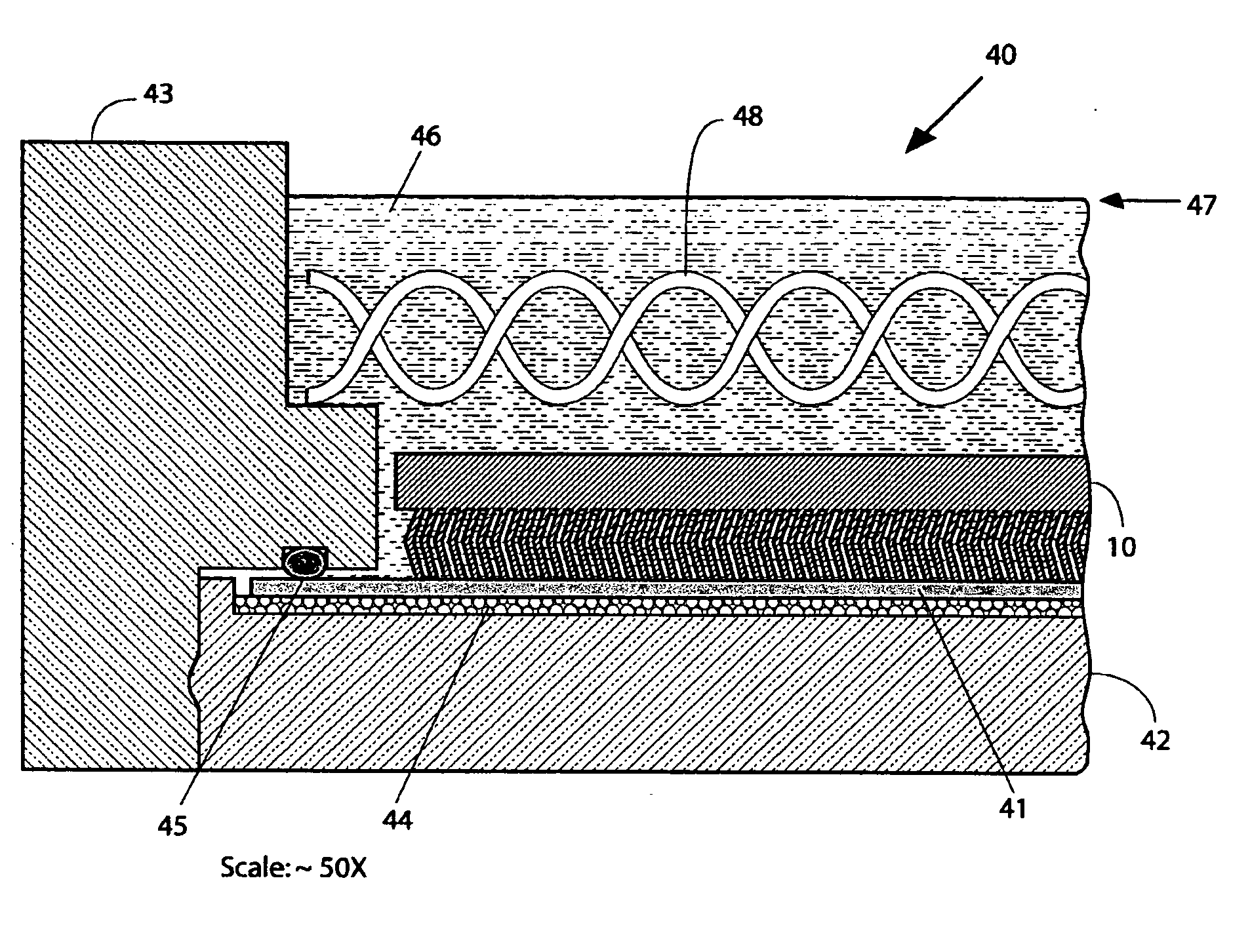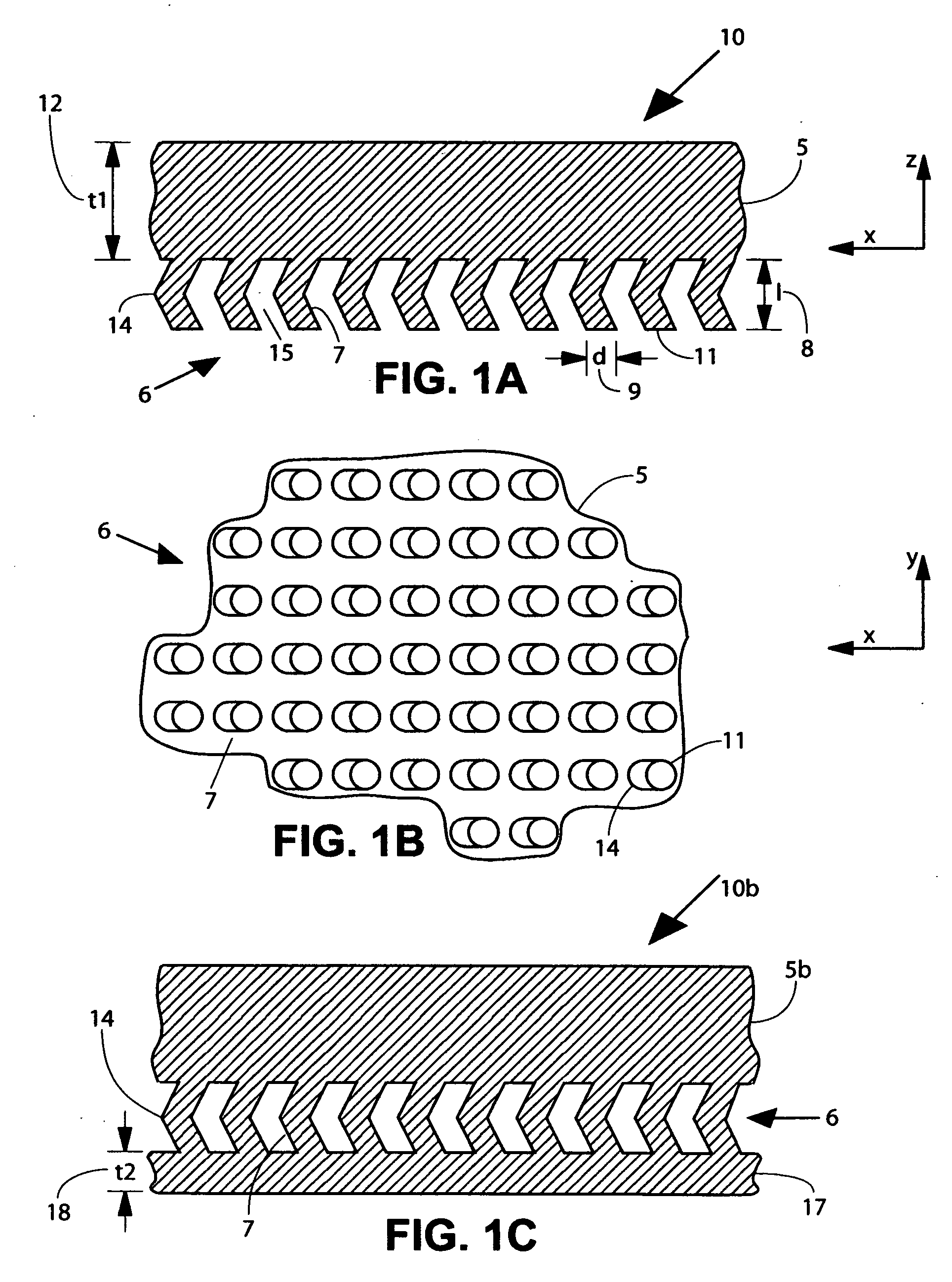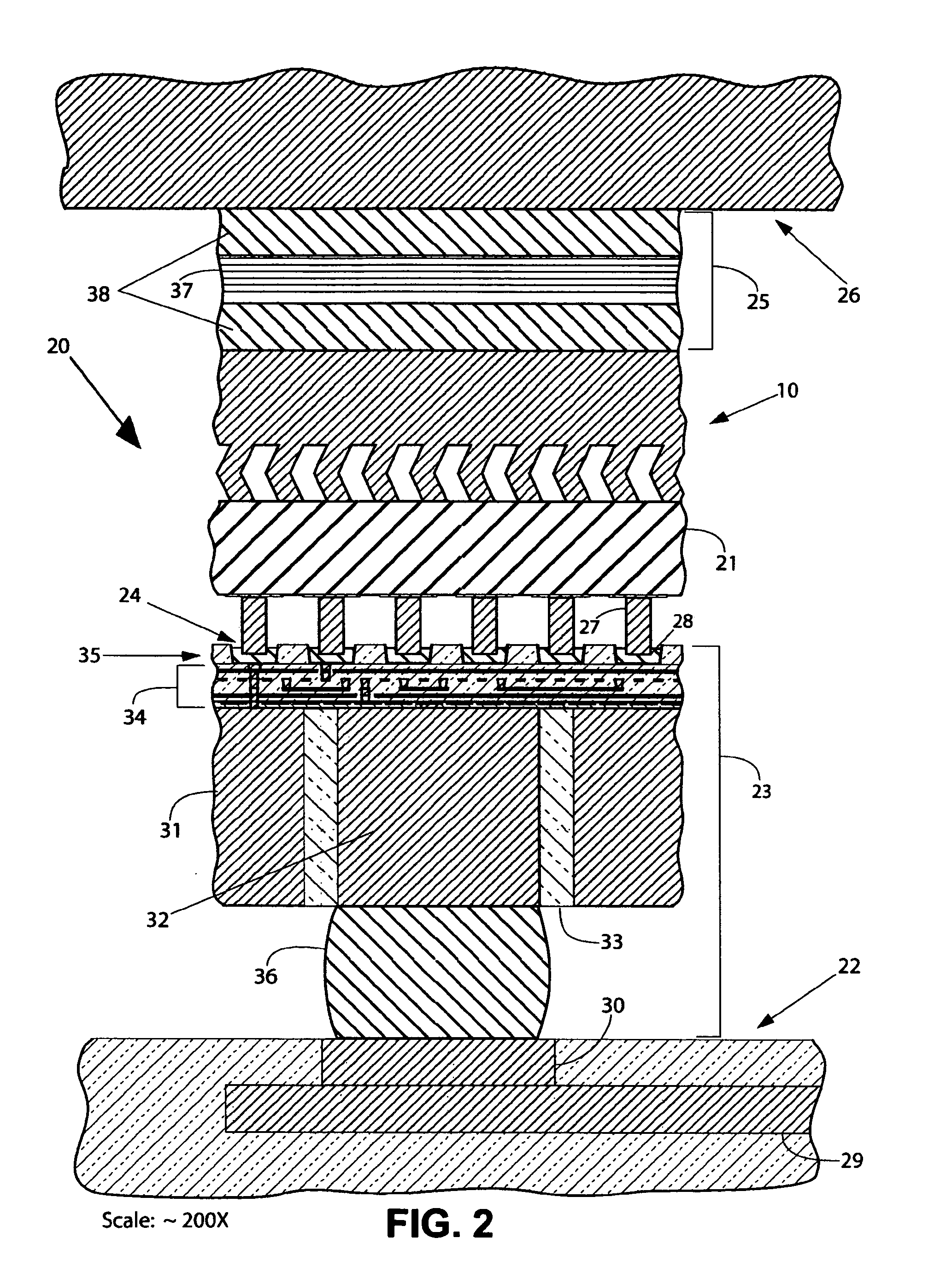Adaptive interface using flexible fingers
a flexible finger and adaptive technology, applied in the direction of cooling/ventilation/heating modification, semiconductor/solid-state device details, semiconductor devices, etc., can solve the problems of large stress induced during the temperature cycle of manufacture and operation, and the special properties of the layer chosen for its special properties may not be ideally suited for direct lamination, cracking or delamination, etc., to achieve the effect of easing mechanical and/or thermal stress
- Summary
- Abstract
- Description
- Claims
- Application Information
AI Technical Summary
Benefits of technology
Problems solved by technology
Method used
Image
Examples
Embodiment Construction
[0029]FIG. 1A shows a fragment of an Interface Adaptor 10 of the current invention in cross-section, including a base layer 5 and an array 6 of fingers 7. By virtue of its length, 1, 8 and its diameter, d, 9, each finger 7 has flexibility that allows its end 11 to move in the −x and −y directions relative to base layer 5. Base layer 5 is preferably a planar element defined in the −x and −y directions, and having a thickness, t1, t2. Each finger 7 also preferably has a bend 14 in it, providing flexibility in the −z direction, normal to base layer 5. The bend in each finger enables it to operate like a spring, particularly with regard to expansion / contraction in the −z direction. Because of gaps 15 between fingers 7, each finger can move independently of its neighbors. The fact that each finger acts flexibly and independently enables a collective behavior for the array 6 of fingers, wherein localized stresses between Interface Adaptor 10 and an attached object or component can be reli...
PUM
 Login to View More
Login to View More Abstract
Description
Claims
Application Information
 Login to View More
Login to View More - R&D
- Intellectual Property
- Life Sciences
- Materials
- Tech Scout
- Unparalleled Data Quality
- Higher Quality Content
- 60% Fewer Hallucinations
Browse by: Latest US Patents, China's latest patents, Technical Efficacy Thesaurus, Application Domain, Technology Topic, Popular Technical Reports.
© 2025 PatSnap. All rights reserved.Legal|Privacy policy|Modern Slavery Act Transparency Statement|Sitemap|About US| Contact US: help@patsnap.com



